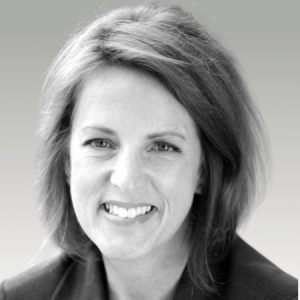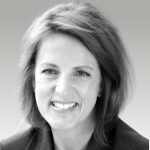
Whitney Johnson
Guest is known for...
Whitney Johnson is the CEO of WLJ Advisors and a leading business thinker recognized by Thinkers50. She helps high-growth organizations develop high-growth individuals, is a renowned keynote speaker, and lecturer at Harvard Business School. Whitney is also an executive coach and advisor to CEOs, an award-winning author, and a contributor to the Harvard Business Review. She was the cofounder of the Disruptive Innovation Fund with Clayton Christensen and a former award-winning Wall Street stock analyst. Whitney hosts the Disrupt Yourself podcast and is married with two children.
Here's what I will learn...
In our conversation, we dive into her insights from her book Disrupt Yourself, where she adapts Clay Christiansen’s model of Disruptive Innovation to illustrate how we should think about our careers as riding multiple S curves where end up disrupting ourselves at each inflection point.
LISTEN TO THE FULL CONVERSATION
From the Podcast
Whitney speaks about the application of the Theory of Disruptive Innovation (Courtesy Late Clay Christiansen) as applied to Careers. She speaks about why going up and up on the same curve starts yielding diminishing returns and discusses how we can take a step back or sideways to slingshot ourselves into the next trajectory.
Whitney speaks about how we all should think about the next S curve we could get onto in our journeys. She speaks to the notion of market risk versus competitive risk when it comes to identifying S curves. She goes onto say that the rewards are statistically better if we choose to identify a “job to be done” that’s currently not being done or an unmet need.
Whitney speaks about how we all need to tune into our “super-power” and discover our strengths and use that as a starting point to discover our next S curve. She speaks about the fact that we are often quite blind to what our strengths are and have the tendency to shrug off complements when we get them. She suggests some ideas on how we can discover our strengths.
Whitney speaks about how sometimes constraints bring out the best in us and drive us to innovate – at some level, I guess that’s the whole raison d’etre of Jugaad innovation. She speaks about the need for an optimal number of constraints that bring out the best in us. She urges to leverage constraints as a tool of creation to gain the momentum up the curve.
Whitney speaks about the dilemma that a lot of face at the foothills of a new S curve. Should I persist with the pain or should I climb a different mountain. She speaks about the fact that even if we climb the right S curve, statistically, often, it is only a 36% chance of success which leaves us with a 64% chance of failure. She speaks about the 4 questions we need to ask ourselves to discern if we should persist or jump.
Whitney speaks about how we need to often rethink the metrics with which we need to measure ourselves as go from one S curve to another. Very often we are hardwired to think about metrics in a certain way and we often become a slave of that wiring/habit leading to disconnect with what we measure when we move from one S curve to another
Whitney speaks about how we should think about our identity when we experience the free fall when we move from the top of an S curve to the foothills of a new S curve. She speaks about the criticality of having a clear “Why” and the notion of smaller S curves to make it less risky when you transition from one trapeze to another.
Whitney speaks about how we can think about picking career paths in a world with abundant opportunity. She speaks about the notion of maximizing optionality especially early in the career when one doesn’t know what one is truly passionate about.
